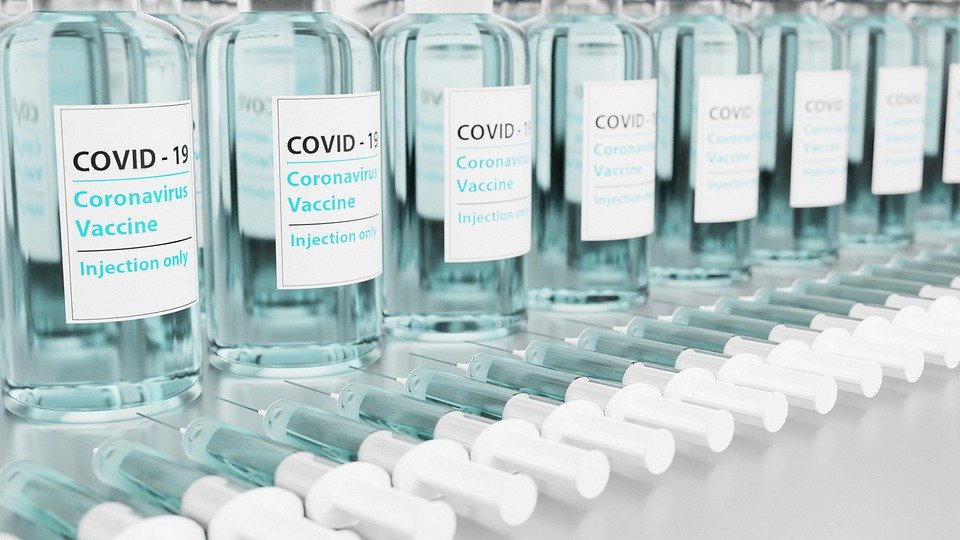Vaxzevria (formerly COVID-19 Vaccine AstraZeneca) is authorised in the EU to prevent COVID-19, which can cause severe disease and death. The disease can also have long-term consequences in people of all ages, including in otherwise healthy people.
The benefits of Vaxzevria outweigh its risks in adults of all age groups; however, very rare cases of blood clots with low blood platelets[1] have occurred following vaccination.
To support national authorities making decisions on how to best use the vaccine in their territories, EMA’s human medicines committee (CHMP) has further analysed available data to put the risk of these very rare blood clots in the context of the vaccine’s benefits for different age groups and different rates of infection.
The analysis will inform national decisions on the roll out of the vaccine, taking into account the pandemic situation as it evolves and other factors, such as vaccine availability. The analysis could change as new data become available.
The Committee also considered available data on the use of the second dose.
Known benefits and risk of Vaxzevria
Vaxzevria is effective at preventing hospitalisations, intensive care unit (ICU) admissions and deaths due to COVID-19. The most common side effects are usually mild or moderate and get better within a few days. The most serious side effects are very rare cases of unusual blood clots with low blood platelets, which are estimated to occur in 1 in 100,000 vaccinated people. People should seek medical assistance if they have symptoms.
What data show for age groups and infection rates
The Committee analysed the vaccine’s benefits and the risk of unusual blood clots with low platelets in different age groups in the context of the monthly infection rates: low (55 per 100,000 people), medium (401 per 100,000 people) and high (886 per 100,000 people).[2]
The analysis looked at prevention of hospitalisations, ICU admissions and deaths due to COVID-19, based on different assumptions of vaccine effectiveness to contextualise the occurrence of these unusual blood clots. It showed that the benefits of vaccination increase with increasing age and infection rates.
There were insufficient data available from across the EU to provide further context on benefits and risks with regard to sex.
Graphic representations of the findings, assuming an 80% vaccine effectiveness over a period of four months, are available. The CHMP’s assessment report with the full data will be published shortly. The current analysis does not constitute an assessment of the vaccine’s benefit-risk balance, which remains positive for adults in all age groups.
As for all vaccines, Vaxzevria is approved in the EU because its benefits outweigh the risks for an individual potentially exposed to the agent causing disease. However, national authorities later consider other factors when deciding how to best use the vaccines. Because vaccination is a public health intervention, national authorities could also consider the benefits to the population as a whole, as vaccines may protect more people than are vaccinated.
While this analysis may be subject to change as new data become available, it may guide EU Member States when they adjust their vaccination strategies depending on the infection rates and ages of people who still need to be vaccinated.
Second dose of Vaxzevria
The Committee recommended to continue giving a second dose of Vaxzevria between 4 and 12 weeks after giving the first one in line with the product information.
The CHMP considered recommendations to give the second dose of Vaxzevria after a longer interval than the recommended 4-12 weeks, to not give a second dose at all, or to give an mRNA vaccine as a second dose.
However, there has not been enough exposure and follow-up time to determine whether the risk of blood clots with low blood platelets after a second dose will differ from the risk after the first dose. At present there are no or limited data to change current recommendations.
Data sources and uncertainties
The Committee used data from the European Centre for Disease Prevention and Control (ECDC) and EU Member States to determine how many cases of hospitalisation, ICU admissions or deaths would occur in different age groups in areas with high, medium and low infection rates. Using data from observational studies,[3],[4] it then determined the number of events the vaccine would prevent.
To calculate the risk of blood clots with low blood platelets, the Committee used data reported to the European database for side effects (Eudravigilance).
As is the case with many population-based analyses, there are some uncertainties. These uncertainties stem from the lack of uniform data across the EU, possible delays in reporting side effects, possible unreported side effects, and limited data from observational studies. As more data become available, the estimates of benefits and risks can be updated.
More information on the data sources and methodology will be available in an assessment report on EMA’s website.
More about the vaccine
Vaxzevria is a vaccine for preventing coronavirus disease 2019 (COVID-19) in people aged 18 years and older. COVID-19 is caused by SARS-CoV-2 virus. Vaxzevria is made up of another virus (of the adenovirus family) that has been modified to contain the gene for making a protein from SARS-CoV-2. The vaccine does not contain the virus itself and cannot cause COVID-19.
More information about the vaccine is available on EMA’s website.
More about the procedure
The European Commission requested this review under Article 5(3) of Regulation 726/2004 following an informal meeting of EU health ministers on 7 April 2021. The review by EMA’s Committee for Medicinal Products for Human Use (CHMP) is still ongoing. Further data will be published when it concludes.
ema.eurpa.eu


















